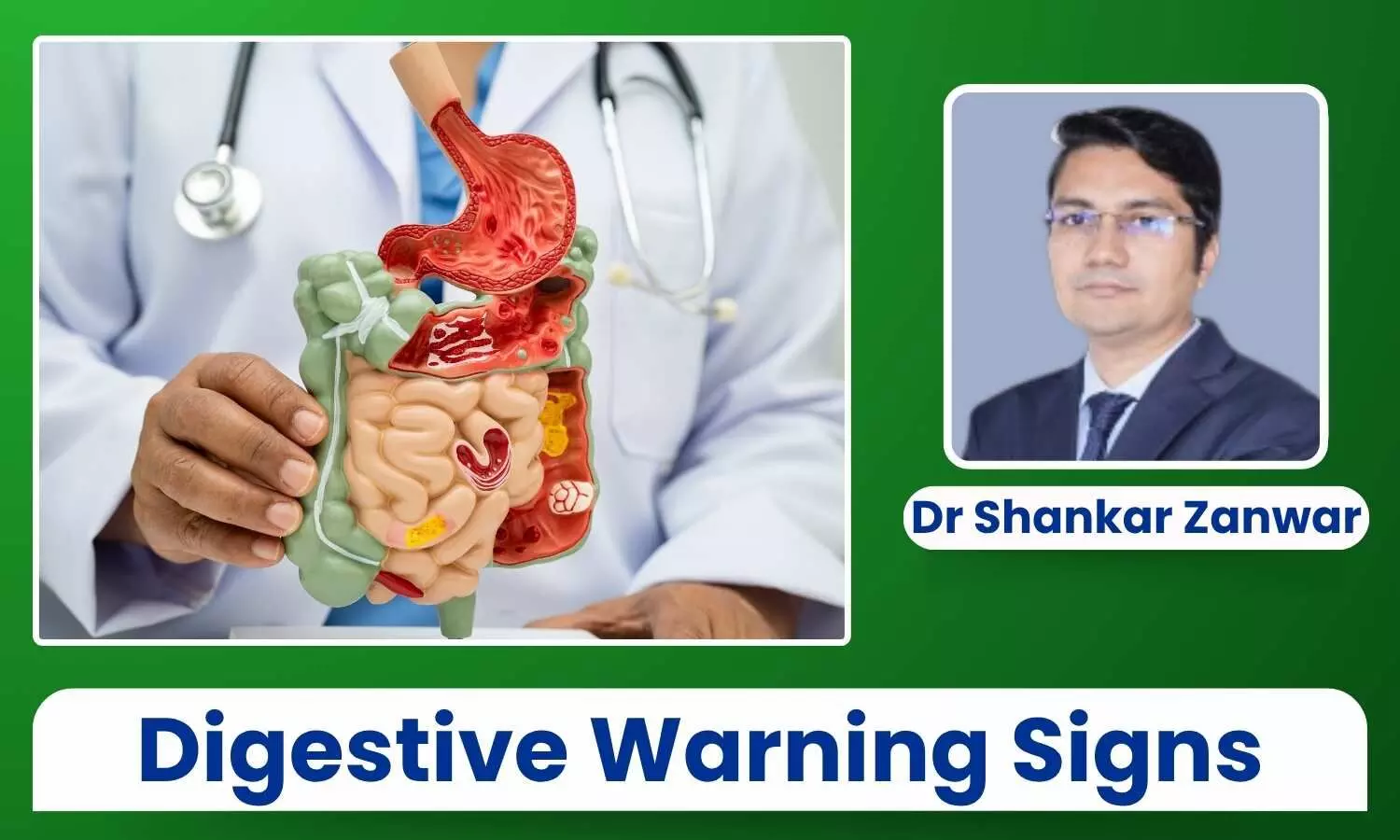Indigestion or Something Serious? 7 Digestive Symptoms You Should Never Ignore - Dr Shankar Zanwar

Introduction
Indigestion, or dyspepsia, is one of the most common digestive complaints. A heavy feeling after meals, bloating, mild discomfort – we’ve all experienced it.
Most often, it’s harmless and short-lived. But sometimes, what seems like simple indigestion can be a warning sign of a more serious underlying condition. Knowing when to seek medical attention is critical to prevent complications and ensure timely diagnosis.
Common vs Concerning: Understanding Digestive Symptoms
While indigestion can be linked to lifestyle factors, like eating too fast, consuming spicy or fatty foods, or stress, it can also mimic or mask symptoms of more serious gastrointestinal (GI) disorders.
Warning Signs You Shouldn't Ignore
Here are some key signs that digestive issues may be more than just indigestion:
1. Persistent or Recurrent Symptoms: Occasional discomfort is common. But if symptoms such as bloating, nausea, or upper abdominal pain persist for more than a few weeks, it may indicate a chronic condition like GERD, gastritis, or even an ulcer.
2. Unexplained Weight Loss: Losing weight without trying can be a red flag, especially when combined with digestive symptoms. Conditions like inflammatory bowel disease (IBD), celiac disease, or gastrointestinal cancers must be ruled out.
3. Difficulty Swallowing (Dysphagia):Trouble swallowing, especially if it worsens over time, could point to esophageal disorders or even malignancies.
4. Vomiting Blood or Black Stools: These could be signs of upper gastrointestinal bleeding, possibly from ulcers or esophageal varices, and require urgent attention.
5. Persistent Heartburn: Occasional heartburn is manageable. However, frequent episodes may indicate gastroesophageal reflux disease (GERD), which can lead to complications like Barrett's esophagus or esophageal cancer if left untreated.
6. Change in Bowel Habits: Constipation alternating with diarrhoea, especially when accompanied by abdominal pain, may suggest irritable bowel syndrome (IBS) or IBD.
7. Jaundice or Pale Stools: Yellowing of the skin or eyes, along with pale stools and dark urine, may indicate liver or bile duct issues.
Conditions Often Mistaken for Simple Indigestion
- Gastric or Duodenal Ulcers: These can cause persistent upper abdominal pain, often mistaken for simple acidity.
- Gallstones: Pain in the upper right abdomen after meals, especially fatty ones, can signal gallbladder disease.
- Pancreatitis: Severe abdominal pain radiating to the back, often triggered by alcohol or gallstones, may masquerade as indigestion initially.
- Gastric or Colorectal Cancer: Early stages often present with vague symptoms like fullness, bloating, or mild pain.
When to see a Doctor?
Digestive symptoms that:
- Last longer than 2 weeks
- Interfere with daily life
- Do not respond to over-the-counter medications
- Are accompanied by the red flags mentioned above
... should never be ignored. Early diagnosis can be life-saving.
Role of Diagnostic Tools
Physicians may recommend investigations such as:
- Upper GI endoscopy
- Abdominal ultrasound or CT scan
- Blood tests including liver function and H. pylori testing
- Stool tests for infections, blood, or inflammatory markers
These tools help in identifying or ruling out serious conditions behind persistent symptoms.
Promoting Digestive Health
- Eat mindfully: Avoid overeating, chew slowly.
- Limit irritants: Reduce spicy, fatty, and acidic foods.
- Stay active: Regular exercise improves digestion.
- Manage stress: Stress has a direct impact on gut health.
- Routine screening: Especially after age 40 or if there’s a family history of GI conditions.


